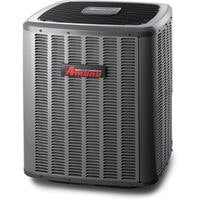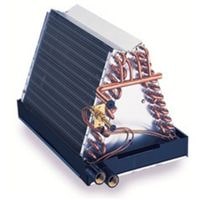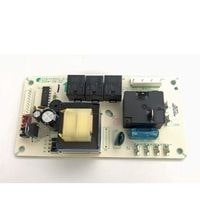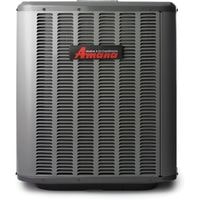Amana Air Conditioner Won’t Turn Off. If your air conditioner won’t turn off, the temperature indoors quickly becomes too cool for comfort, and electrical power is wasted over the hours your air conditioner keeps running.
Malfunctions affecting different system components can prevent the air conditioner unit from turning off as expected.
Such as a clogged air filter, a frozen evaporator coil, a faulty electrical relay switch, a dirty condenser coil, an icing fan or motor, an out-of-tune thermostat, low refrigerant, and many others.
Amana Air Conditioner Won’t Turn Off

When your air conditioning system keeps running and never seems to shut off, the problem could be linked to a number of malfunctioning components linked to one another, frozen evaporator coils that are dirty.
A clogged air filter that isn’t working properly, a bad electrical relay switch that has to be replaced immediately, the fan constantly blowing for some reason, dirty condenser coils which might not be able to function properly unless cleaned regularly, and possibly other problems too that tend to arise in the machinery of an AC system.
We discuss some issues with the Amana air conditioner that won’t turn off here.
Electrical Problems
Air conditioners have a lot of electrical parts. A relay switch makes an electrical circuit stay closed automatically. It lets the condenser unit stay on with constant power.
The compressor contactor can fuse in a closed position, so the condenser unit stays on for longer periods of time.
But sometimes a switch is just stuck, so it gets fixed by specialists to get your air conditioner to work properly again.
Issue With Thermostat
A thermostat is a device used to monitor the temperature of air and switch devices on or off according to the temperature.
If the air is too hot, it will turn on fans and compressors – like those found in air conditioners.
A defective thermostat may lead to continuous cooling or heating operation, causing unnecessary power consumption and possibly damaging your system.
Use a multimeter to test if a thermostat has continuity when set to “cool.” If not, replace it.
Evaporator Coils Frozen

If the air conditioner is running, but you’re feeling warm or hot air coming from your vents, it’s possible that the evaporator coils in your indoor furnace might be frozen over.
These coils can get iced up when excessive condensation builds upon their surface while they are warming the air in the space.
Clogging of the drip pan and drain line can prevent this system of frost prevention, so caked-on dirt or buildup of grossness such as
dust and/or pet hair on your filters could also be what’s causing this issue. Finally, low levels of refrigerant can cause this problem too.
Main Control Board Malfunction

The main control board provides most of the power to all of the components that make up your AC system.
If it is found to have a malfunction, it might not stop providing power to the compressor. Ahead of time, you need to check more commonly defective parts.
In case you are certain that all other components are working properly and functioning well, then replacing the main control board should get this whole thing sorted out for good.
Control Board For Temperature
The Air conditioner temperature control board gives power to the fan that blows the heated air through your home and the compressor that produces heat.
If the control board is broken, it might not turn off the power to the compressor. However, this is unlikely.
Before replacing the temperature control board, check more commonly defective parts such as a switch or timer. If you’re sure all other components are running properly, replace the temperature control board.
Problem With Relay Board
The relay board relays voltage to many of the air conditioner components, including the fan motor and compressor.
If there is a problem with the relay board, it might cause a continuous loop of voltage to go through the compressor. However, this is almost never the case.
Before you replace the relay board, make sure you check more commonly defective parts. If you are certain that all of the other components are working properly, replace the relay board.
Low Levels Of Refrigerant
Air conditioning systems are meant to be charged with specific amounts of gases known as refrigerants so as to achieve optimal cooling and a stable indoor climate.
These gasses need to be contained within the system in order for everything to work properly; otherwise, if leaks occur or any other damage is made to the system, the ability to remove excess heat is hampered;
thus, an air conditioning system will run continuously in an attempt to compensate for this lack of refrigerants needed in order for it to function.
Uncorrected System Size
Air conditioners have a wide range of sizes, and it’s extremely important they fit their spaces exactly right. When an air conditioning unit is either too big or undersized, it doesn’t have enough power to achieve the temperatures you set for cooling.
The system consumes a great deal of power with inefficient cooling, which runs through the unit quickly until the entire thing unit is replaced.
When a proper fit confirms that the system provides sufficient cooling rather than providing overproduction which comes at an unneeded extra cost.
Amana Air Conditioner Won’t Turn Off
Related Guides
